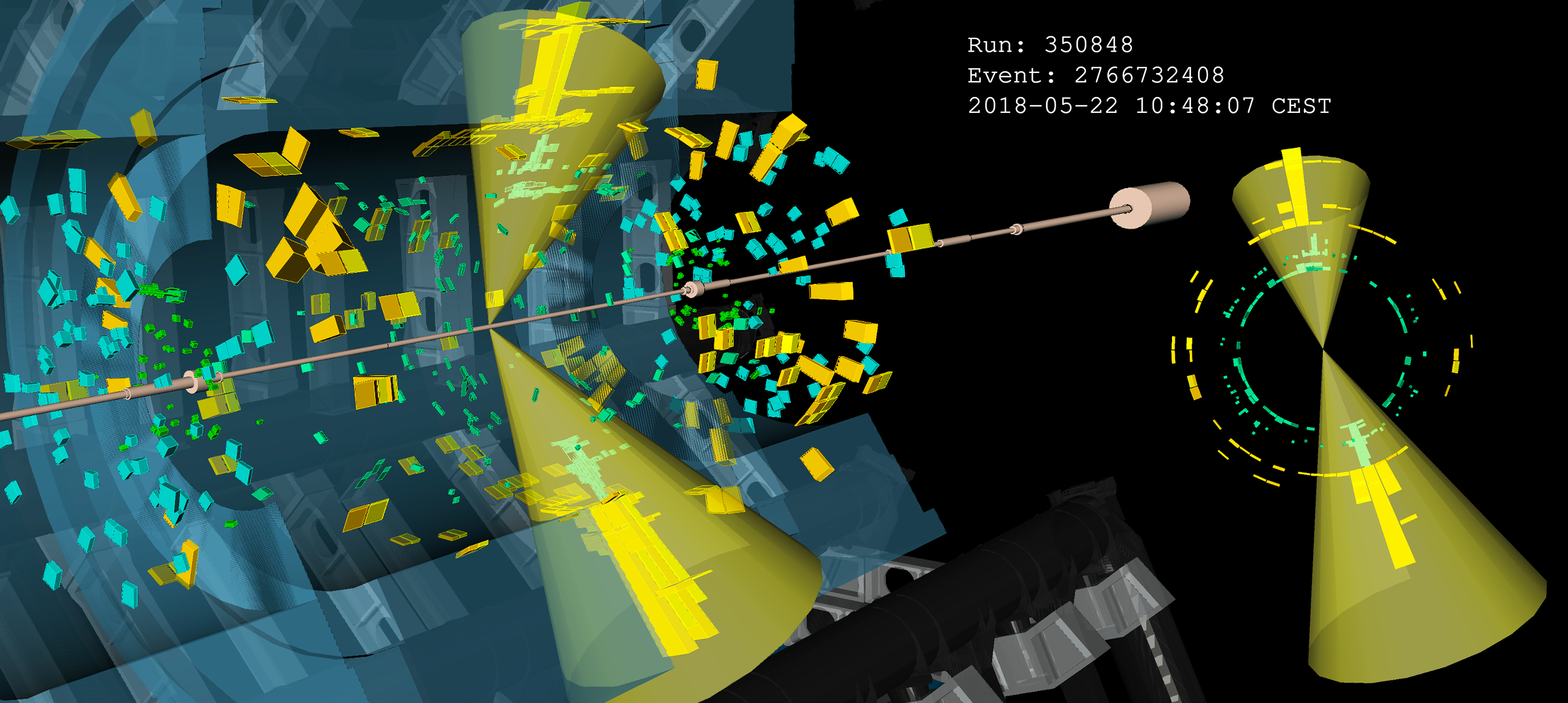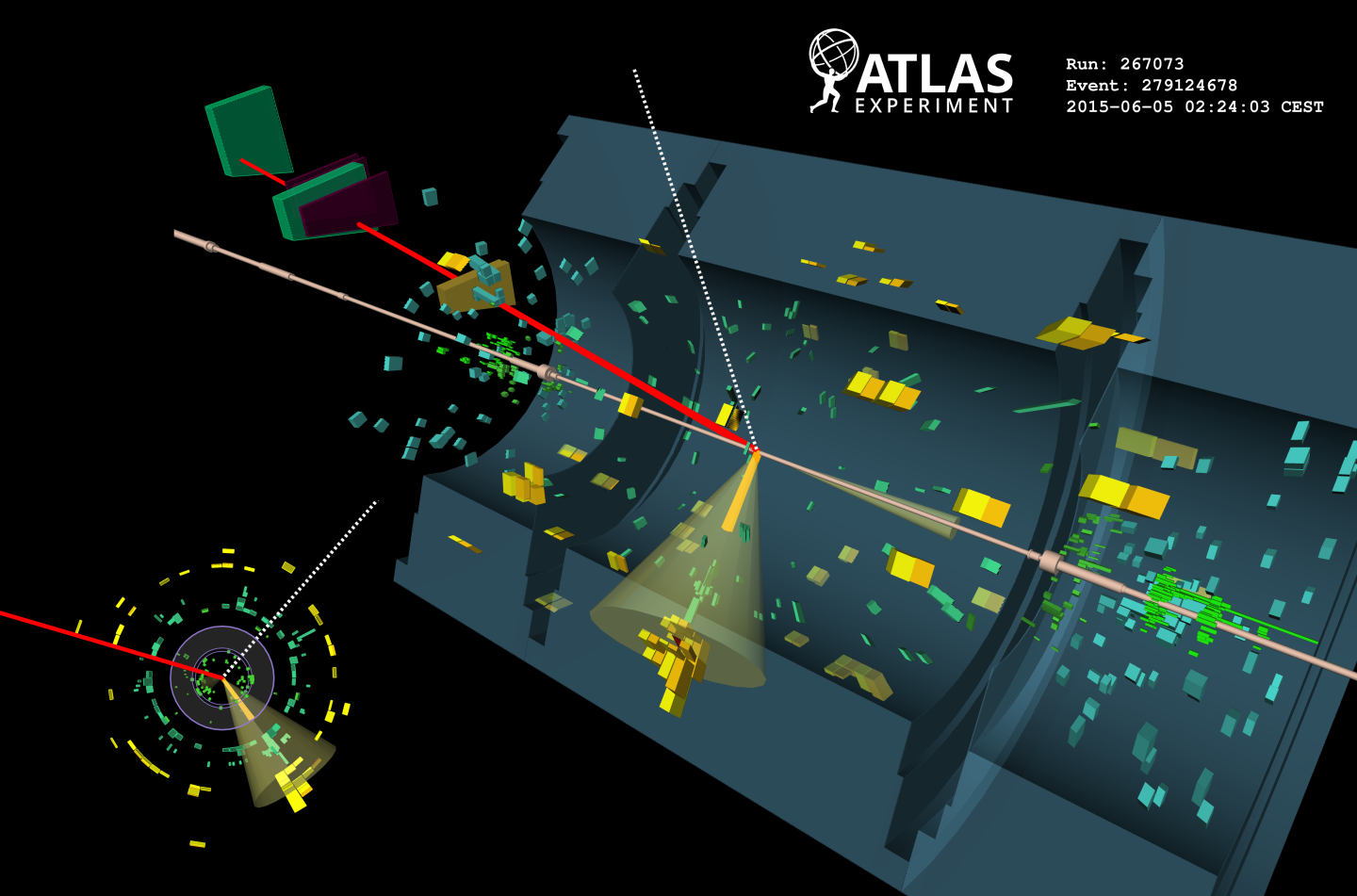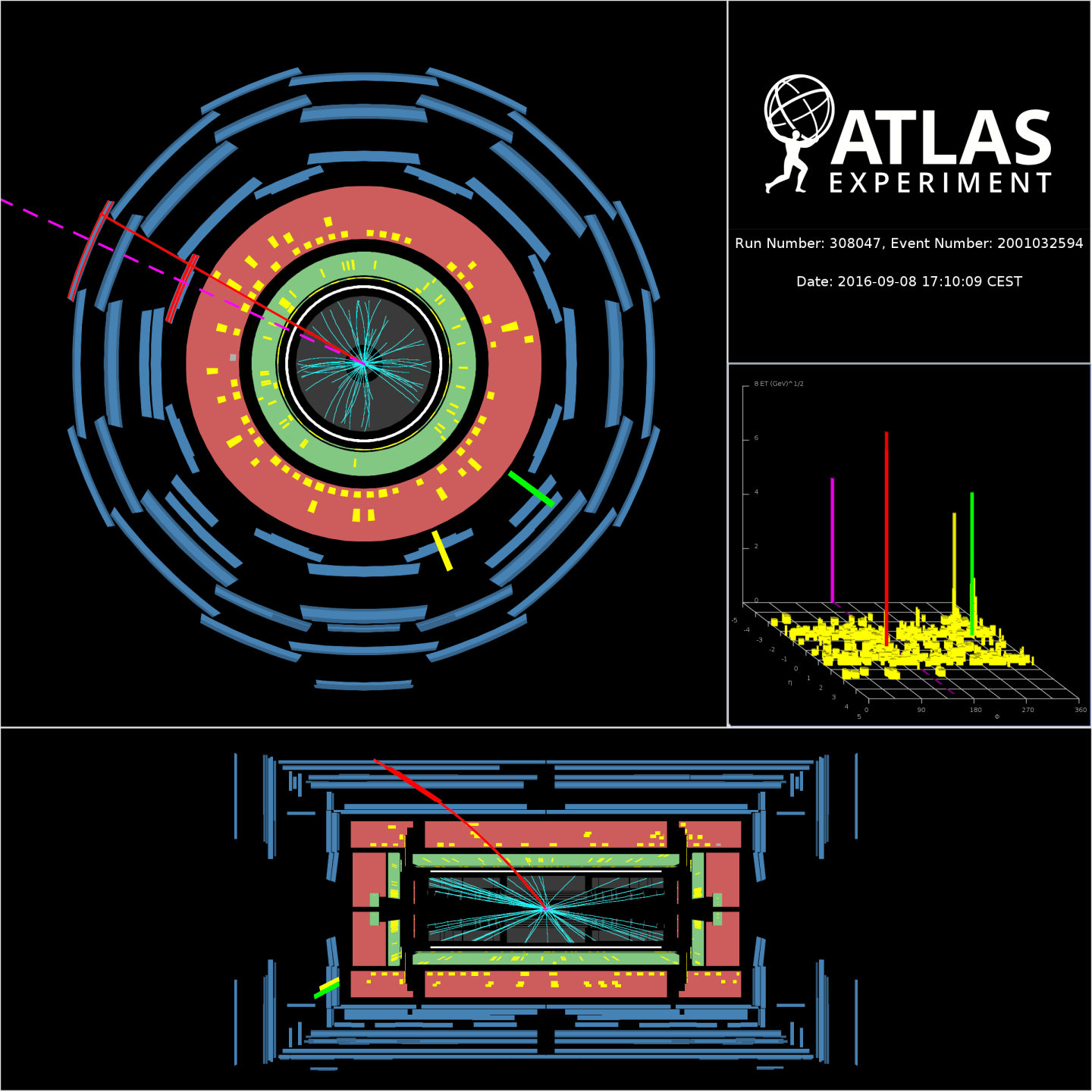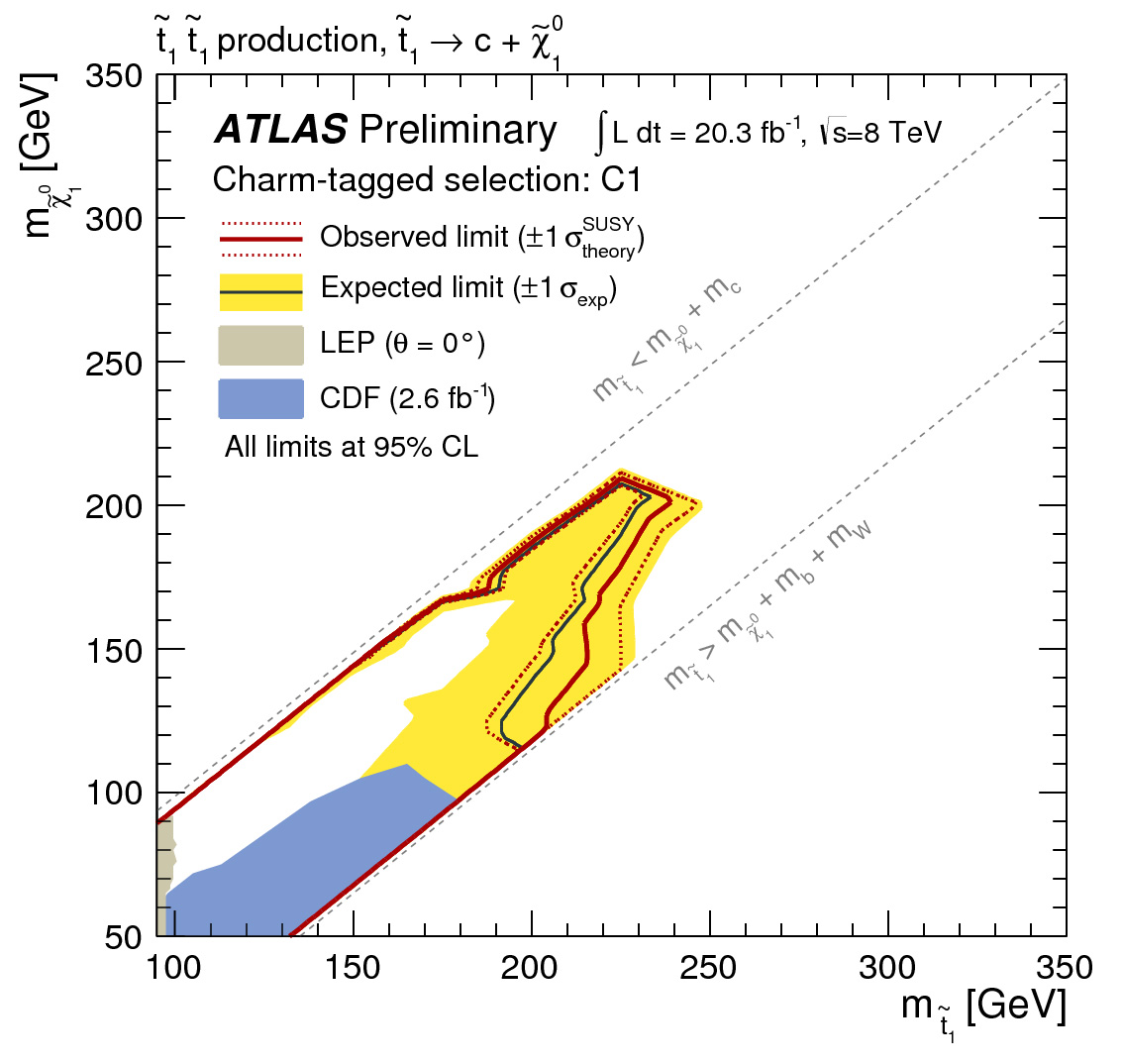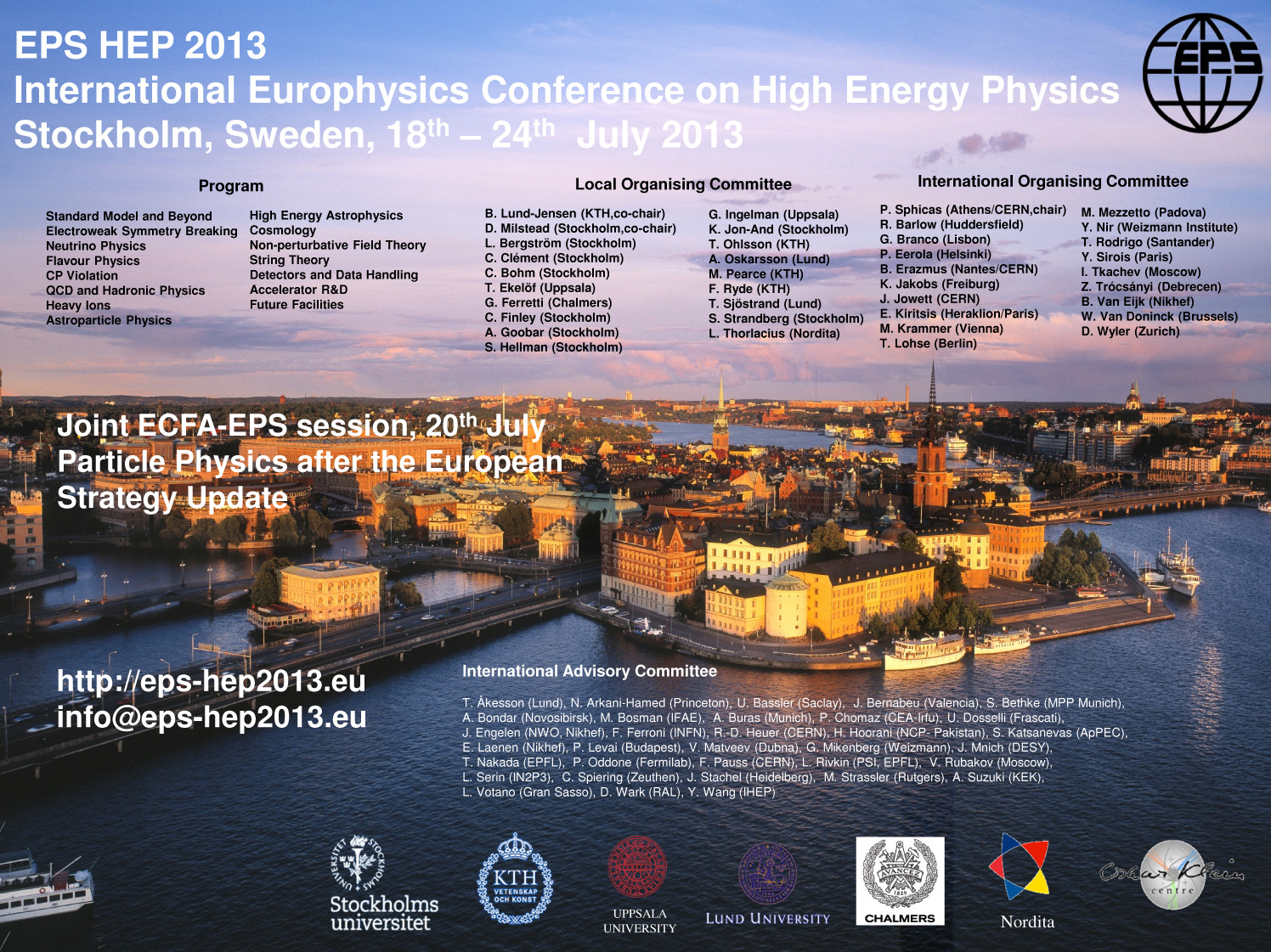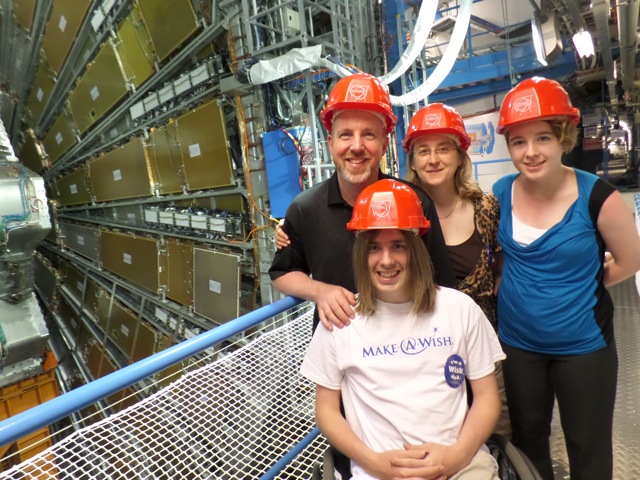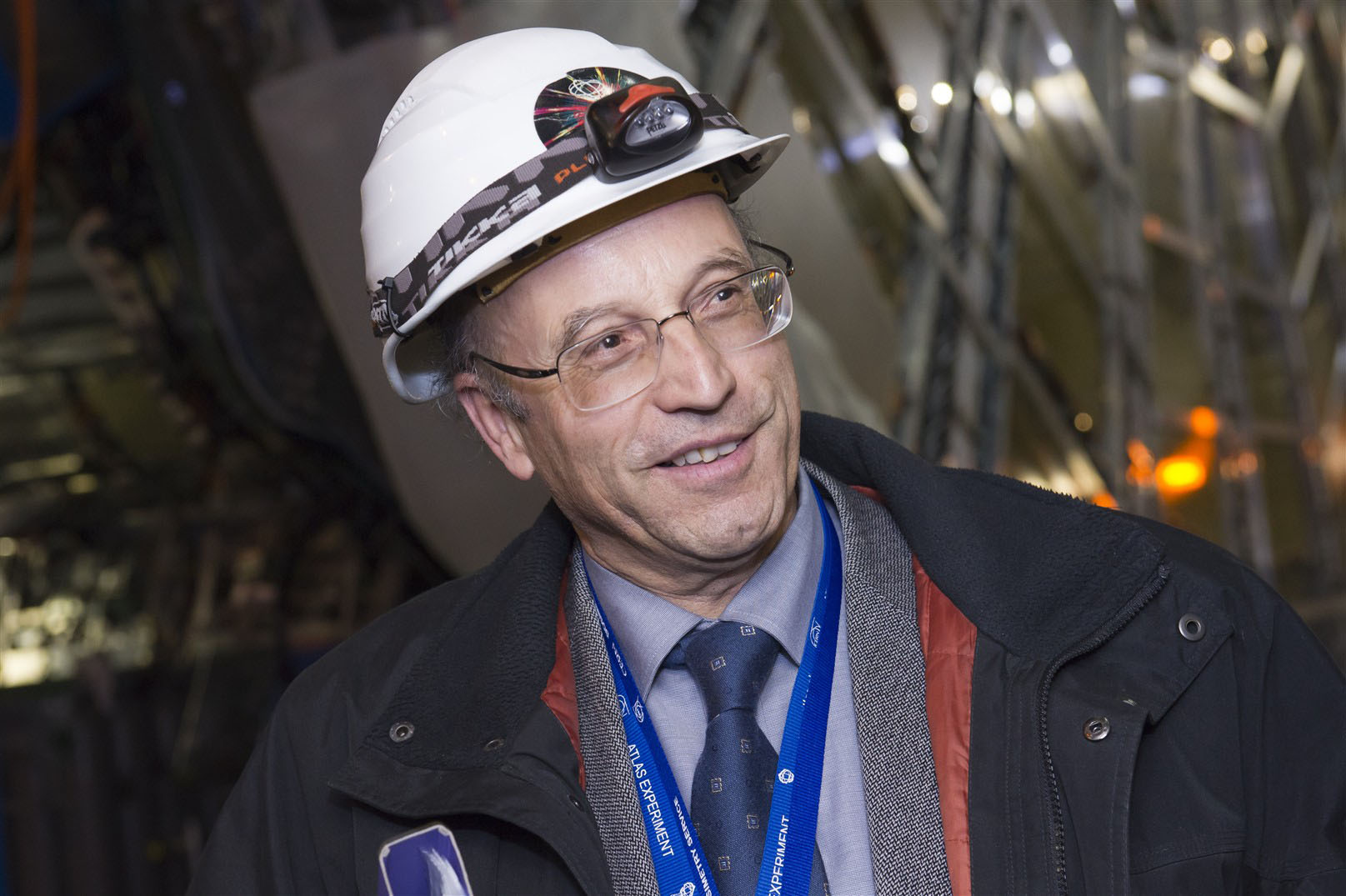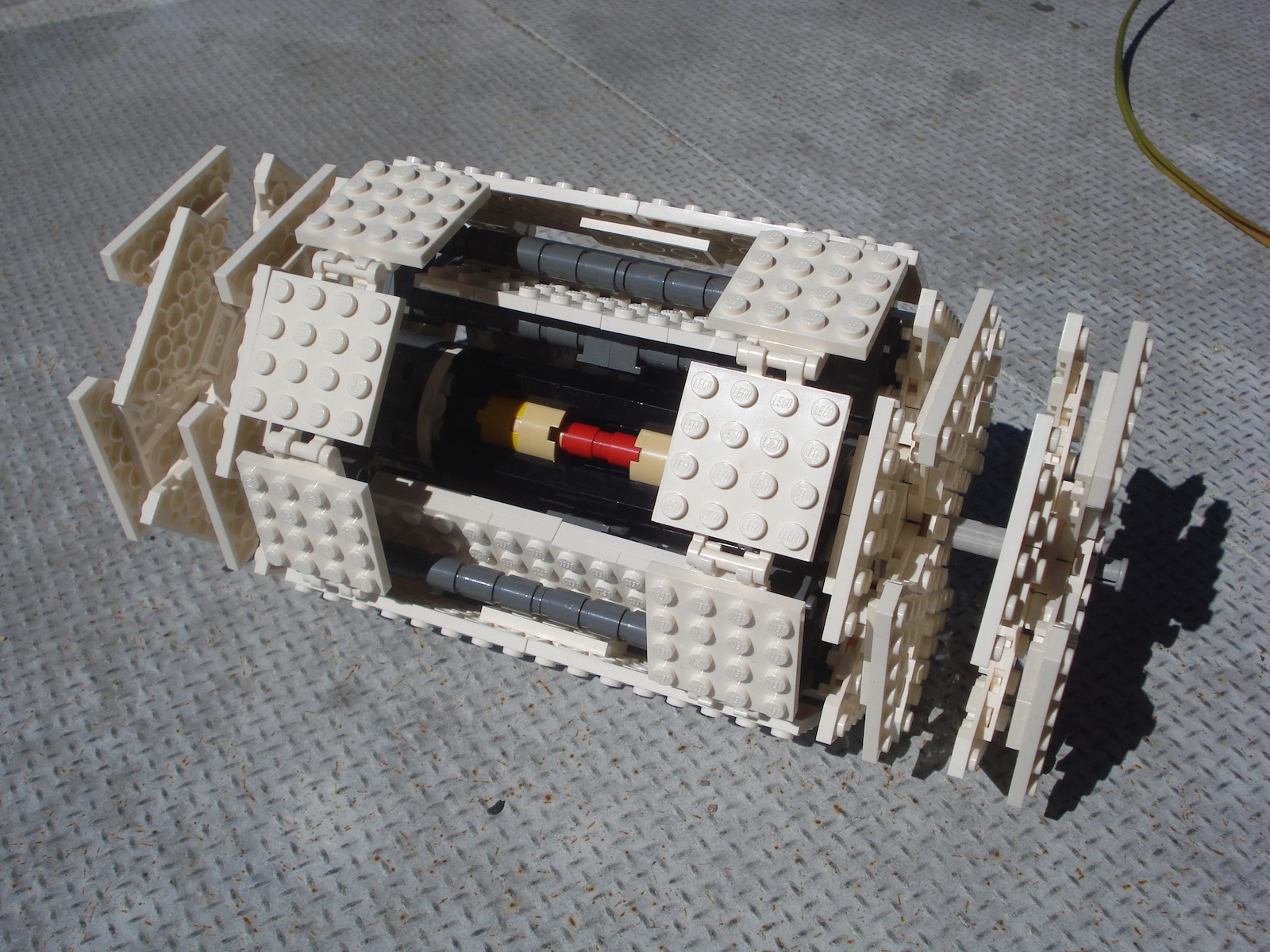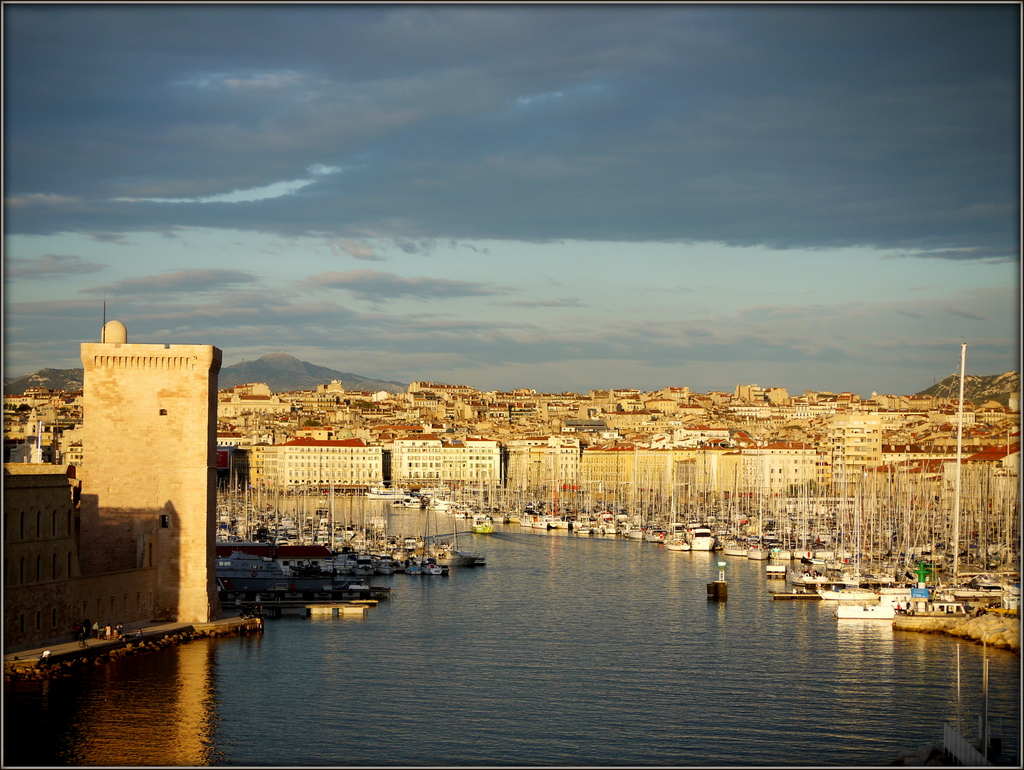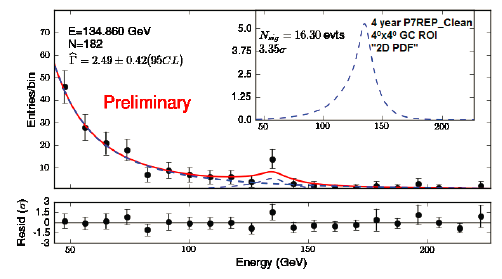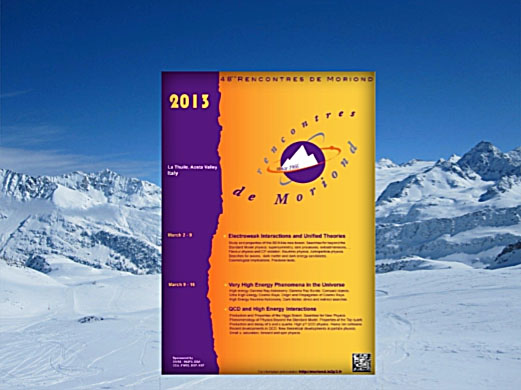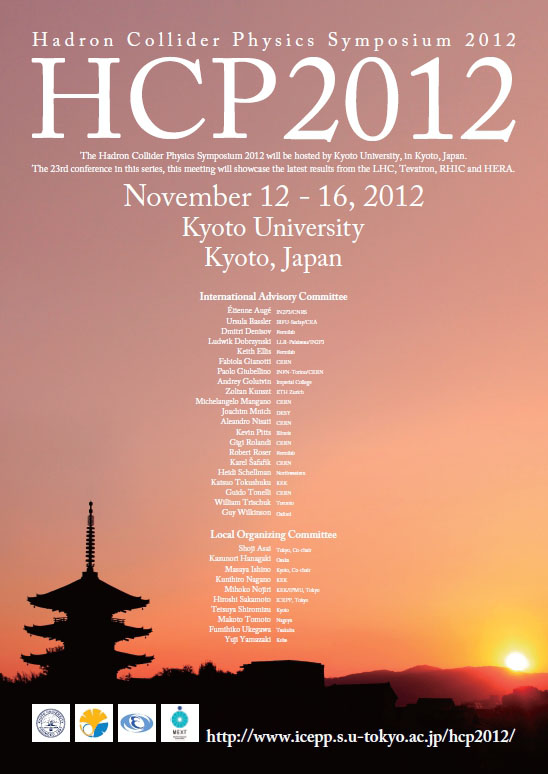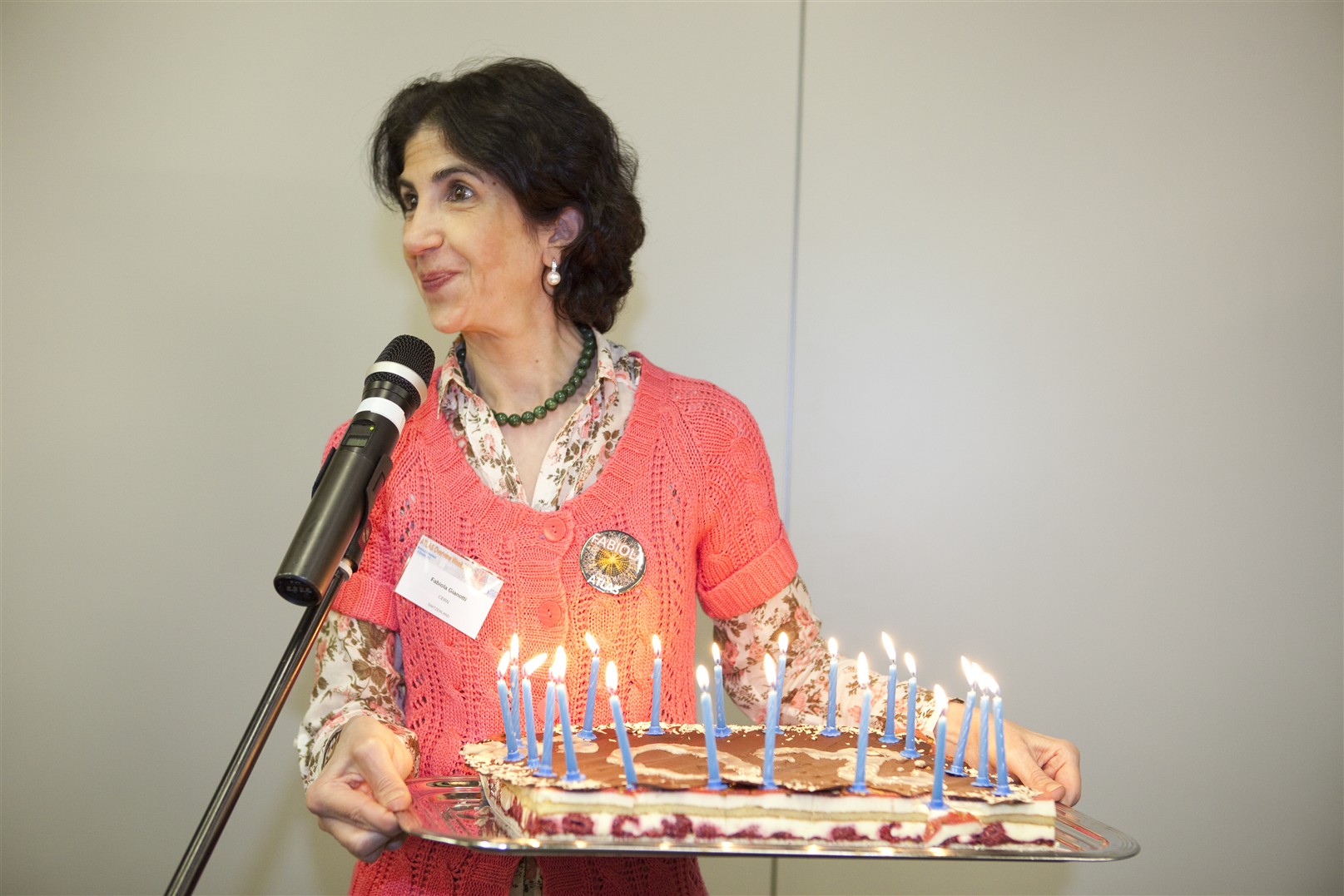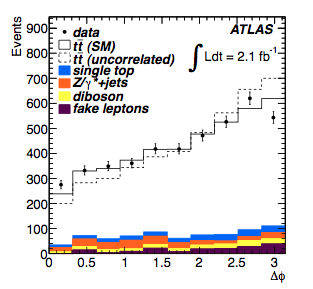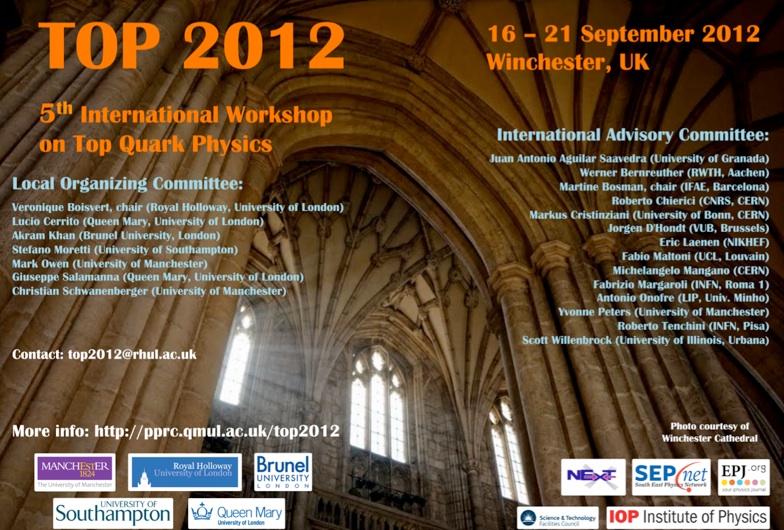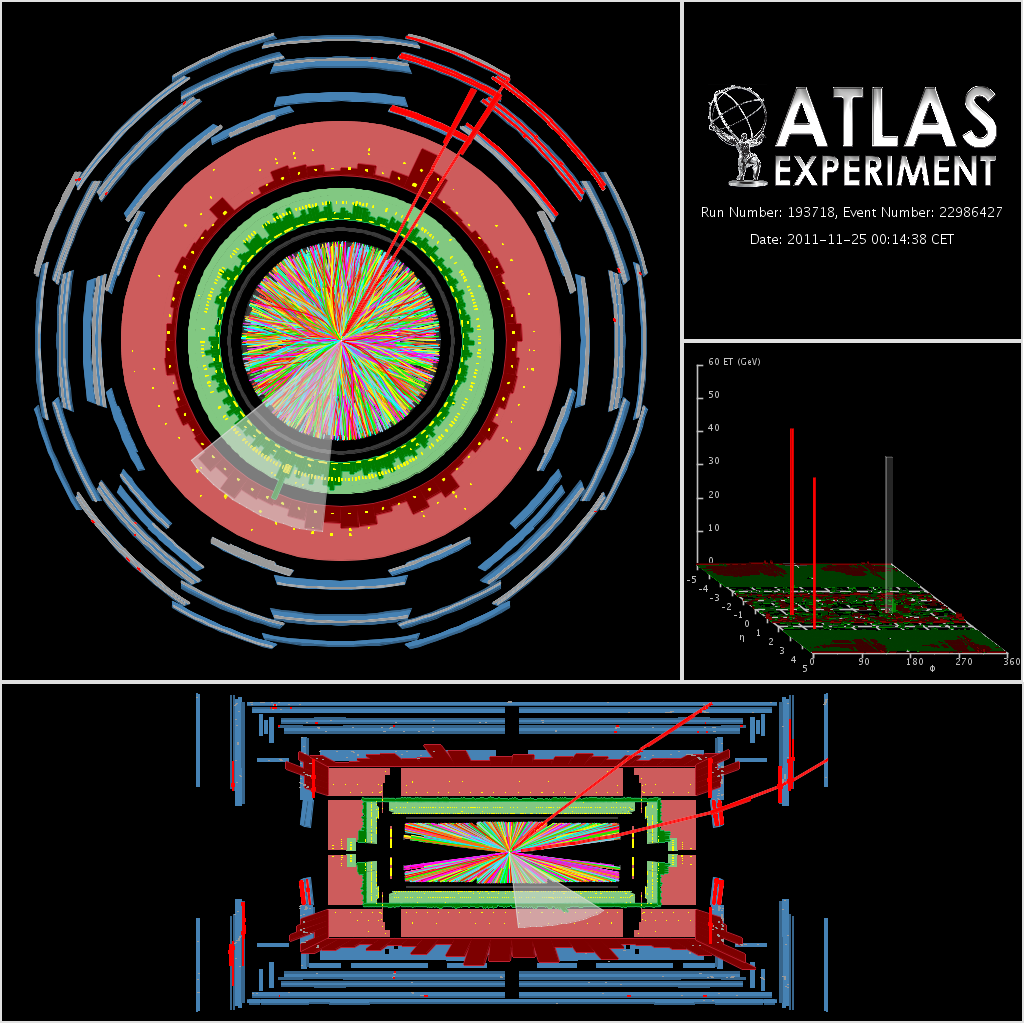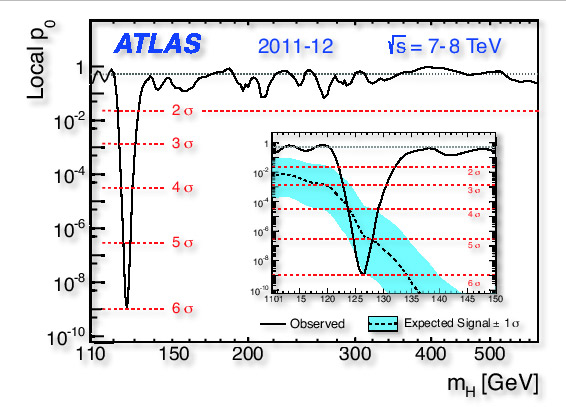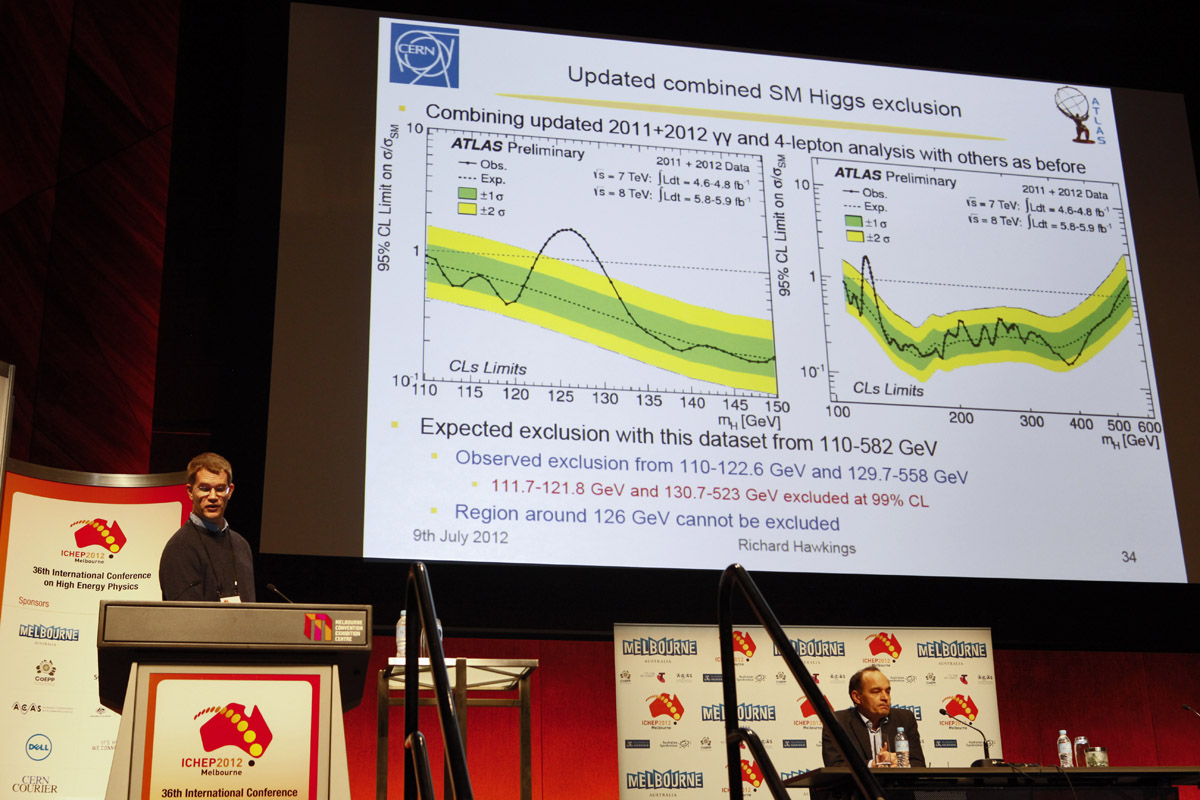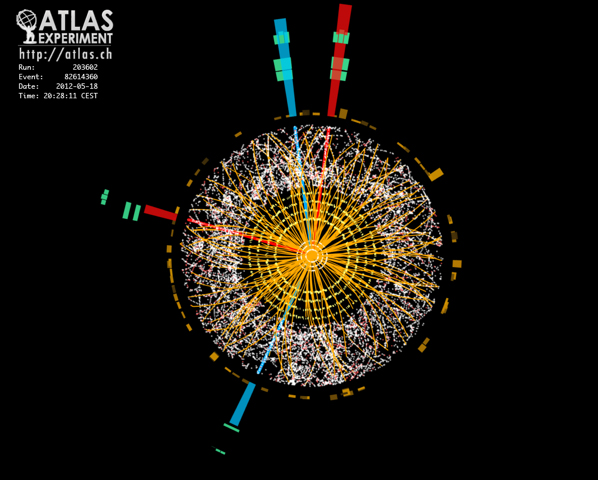New searches for SUSY
ATLAS today presented new searches for Supersymmetry, a theory that could explain the large amount of dark matter in the universe.
News |
New results on the properties of the top quark
At the EPS HEP conference today, ATLAS released a new precise measurement of the top quark mass using events where both top quarks decay via W bosons to electrons or muons. ATLAS also presented limits on the possibility of the top quark decaying to channels not foreseen in the Standard Model. A comparison of the behaviour of top quarks and anti-top quarks produced at the LHC is in agreement with the prediction of the Standard Model, disfavouring models of new physics that require a large top/anti-top asymmetry.
News |
New Results for EPS
ATLAS physicists will be presenting new results at the biennial Europhysics conference on High Energy Physics this year. The conference, which will take place 18 to 24 July in Stockholm, Sweden, is organized by the High Energy and Particle Physics Division of the European Physical Society (EPS).
Granting a wish
Callum Kerr, 17, visited the ATLAS cavern on 8 July, with this family and a representative from Make-A-Wish Foundation.
News |
Everyone Here Is Motivated By Physics
In June 1993, ATLAS and CMS were given the provisional go-ahead to submit technical proposals. Twenty years later, for the discovery of the Higgs boson, the European Physical Society has awarded the High Energy and Particle Physics Prize 2013 to the research teams of the ATLAS and CMS experiments. For their “pioneering and outstanding leadership roles in the making” of the experiments, the prize also goes to ATLAS' Peter Jenni and CMS' Michel Della Negra and Tejinder Virdee. We talked to Peter Jenni, who was spokesperson of the ATLAS collaboration for the first 15 years, on ATLAS' past and future.
News |
Want a small scale LEGO® version of the ATLAS detector?
A small scale version of the ATLAS detector can be made available as an official LEGO® product, but I need people to vote for it at LEGO Cuusoo. We need 10,000 votes to be considered by LEGO®.
Blog |
Report from DIS 2013
The series of workshops named "Deep Inelastic Scattering (DIS)" started way back in Durham, UK in 1993. In the last twenty years, particle physics has evolved in many ways, and this years DIS held at Marseille between April 22-26th was a testament to that fact. While it was one of the biggest conference in terms of Standard Model physics talks from ATLAS, it included talks and latest results covering the full ATLAS (and other big LHC experiments) physics program.
Blog |
Moriond EW feedback
"Moriond", that's an important keyword in our collaboration. It's the winter deadline for many analyses, the occasion to see first results with the whole set of data collected in the past year. An important conference, one of the milestones of the year.
Blog |
What we learned from ATLAS at Les Rencontres de Moriond 2013
Les Rencontres de Moriond, an important conference for the worldwide community of particle physicists, took place from 2-16 March 2013 in La Thuile, Italy. Of all the scientists present, 22 ATLAS physicists had been invited to reveal the experiment's latest findings. What did we learn from this new ATLAS physics harvest?
News |
ATLAS in the Italian Alps for the Rencontres de Moriond 2013
From March 2nd to March 16th 2013 the mythic "Rencontres de Moriond" is taking place in the Italian Alps at the La Tuile ski resort. For the 48th edition of this famous event, more than 420 physicists, theorists and experimentalists, young and more experienced, coming from the four corners of the planet get together in this pleasant environment to share their most recent results and ideas on particle physics. Twenty-two ATLAS physicists were invited to divulge the latest findings of the ATLAS Experiment.
News |
2012: A Year for Science – A Year for Discovery
Amazing, incredible, emotional. These are uncommon words for summarizing the annual accomplishments of a particle physics experiment. Yet 2012 has been a fantastically uncommon year for ATLAS, one of the main experiments at CERN: marvellous machine performance, numerous and interesting physics results, plenty of interactions with students and general public, and - last but not least - a major discovery!
News |
ATLAS in the Land of the Rising Sun for HCP 2012
From November 12th to November 16th, more than 250 particle physicists are gathering in Kyoto, Japan to share their latest results. One of the key international particle physics conferences of the year, the Hadron Collider Physics Symposium 2012 (HCP 2012), will take place this year in the Land of the Rising Sun.
News |
Happy Birthday ATLAS!
Twenty years ago the name “ATLAS” was first used on an official document, the Letter of Intent, to refer to the detector which has been taking data for nigh on three years now, including those data on which the recent Higgs results were based. It has been two decades of growth, development and hard work, resulting in this year’s observation of a Higgs-like particle. All the more reason for the experiment to take a few moments to look back and celebrate.
News |
TOP 2012 - Part 2
Welcome back, dedicated top quark enthusiast. I’m sure you’ve all been waiting on the edge of your seats for an update from TOP 2012, and I can now confirm that a combined team of LHC & Tevatron physicists narrowly beat a mixed team of physicists from LHC & Tevatron at croquet.
Blog |
TOP 2012 - Part 1
Greetings from the TOP 2012 conference, Winchester UK! What’s a ‘Winchester’ I hear you asking? A type of gun? Indeed yes, though sadly not of the smoking variety that we’re all so keen to find. However in this particular case Winchester is a historical town in the south of England, complete with the typical rolling green fields, a cathedral, and the not so typical contingent of visiting physicists!
Blog |
The Physics of Top Quarks
The 5th International Workshop on Top Quark Physics (TOP2012) will take place in Winchester, UK, from the 16th to the 21st of September. It will gather experts in the field of top quark physics as well as PhD students and will highlight the newest results and topics related to the physics of top quarks.
News |
What should we know about the Higgs particle?
On the 4th of July, CERN announced the discovery of a new particle that can be interpreted as the Higgs boson with both the ATLAS and CMS experiments. Since this is one of the most important discoveries over the last 10 or 20 years in particle physics, let’s have a look to the full story.
Blog |
ATLAS Heavy Ion Results Presented at QM 2012 in Washington, D.C.
The Quark Matter conference, which takes place every two years, is this year being organised in Washington, DC, USA on 13-18 August 2012 (QM2012). It will bring together both experimentalists and theorists from all over the world who are studying heavy ion physics at ultra high energies.
News |
ATLAS Supersymmetry Searches and More at SUSY 2012 in Beijing
The 20th International Conference on Supersymmetry and Unification of Fundamental Interactions (SUSY 2012) is taking place in Beijing, China on 13 -18 August 2012. SUSY is the theory which, if confirmed by experiment, will be the high energy extension of the Standard Model (SM). In SUSY, every particle should have a massive "shadow" particle or super-partner. Experimentalists have been looking for years for proof of the existence of these SUSY particles or sparticles.
News |
ATLAS Higgs Search Update
On 31 July, 2012, the ATLAS Experiment submitted a scientific paper describing the discovery of a new particle consistent with the Higgs Boson to the journal Physics Letters B.
News |
A new particle is born, but who is the father?
We have discovered a particle. It is perhaps the particle everybody has been looking for but, for now, let us just call it a particle possibly known as the Higgs.
Blog |
ATLAS Results Presented Down Under at ICHEP 2012
Every other year, particle physicists gather together to share their latest results at the ICHEP (International Conference on High Energy Physics) conference. This year, more than 700 are attending the conference in Melbourne, Australia, July 4-11.
News |
Melbourne Dispatch: A First Coming To Terms with Discovery
Where to begin? The 4th of July, 2012 will remain burned in the memories of those of us fortunate to be delegates at this historic 36th International Conference on High Energy Physics (#ICHEP2012) in beautiful Melbourne, Australia.
Blog |
Very exciting day at CERN about the Higgs??!
Good morning science addicts and everyone! What a special day at CERN today! Indeed, the ATLAS and CMS experiments have just released some outstanding results and observations about the search for the Higgs boson, and the ATLAS and CMS spokespersons (Fabiola Gianotti, and Joe Incandela) just presented those results in the main auditorium at 9 a.m (CERN time).
Blog |
Latest Results from ATLAS Higgs Search
On 4 July, 2012, the ATLAS experiment presented a preview of its updated results on the search for the Higgs Boson. The results were shown at a seminar held jointly at CERN and via video link at ICHEP, the International Conference for High Energy Physics in Melbourne, Australia, where detailed analyses will be presented later this week. At CERN, preliminary results were presented to scientists on site and via webcast to their colleagues located in hundreds of institutions around the world.

